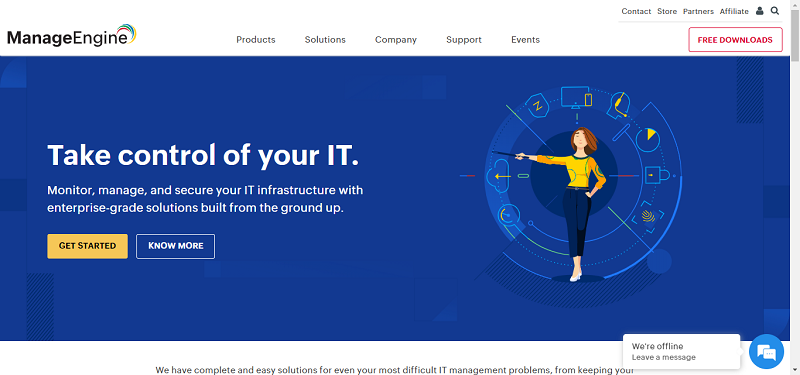Software mapping is an important concept in the field of software engineering and cloud computing. It involves the process of creating a visual representation of software components, their dependencies, and interactions. This visualization helps in understanding the software’s structure, behavior, and performance characteristics. In the context of cloud computing, software mapping provides a bird’s eye view of the entire cloud architecture, allowing for comprehensive management and optimization of resources.
Software mapping in the cloud is like a GPS for your cloud environment—it guides you through the complex network of interconnected services, applications, and infrastructures. It gives you a clear picture of your cloud’s landscape, showing you where everything is located and how it is interconnected. With a good software map, you can easily navigate through your cloud environment, making adjustments and improvements as needed.
In essence, software mapping translates into improved visibility, control, and optimization of resources. It enables cloud professionals to understand the intricate workings of their cloud environment, making it easier to manage and optimize.
One of the main benefits of software mapping in the cloud is resource optimization. By providing a comprehensive view of the entire cloud environment, software mapping helps identify underutilized or overutilized resources. This visibility allows for better allocation of resources, leading to improved performance and cost-efficiency.
Additionally, software mapping helps in capacity planning. By understanding the current usage and performance of resources, you can accurately predict future resource needs and make informed decisions about scaling up or down. This proactive approach prevents resource wastage and ensures that you’re getting the most out of your cloud investment.
Another significant advantage of software mapping in the cloud is enhanced visibility and control. A well-structured software map provides a clear view of all the components in a cloud environment, including applications, services, data flows, and their interdependencies. This visibility facilitates better management and control over the cloud infrastructure.
With a comprehensive software map, you can quickly identify issues, bottlenecks, or vulnerabilities in your cloud environment. You can also track changes and updates across various components, ensuring that everything is working as expected.
Scalability and flexibility are two key features of cloud computing, and software mapping plays a vital role in enabling these features. Through software mapping, you can easily understand the impact of scaling decisions, ensuring that they don’t disrupt the system’s performance or functionality.
By providing a detailed view of the cloud environment, software mapping also supports flexibility. As business needs evolve, you can make changes to your cloud infrastructure with confidence, knowing exactly how those changes will affect other components.
Despite its benefits, software mapping in the cloud is not without challenges. One of the main hurdles is the complexity of cloud environments. With multiple layers of services, applications, and infrastructures, creating a comprehensive software map can be challenging.
Moreover, cloud environments are dynamic, with components constantly changing and evolving. Keeping the software map updated with these changes can be a daunting task. However, with the right tools and techniques, it is possible to manage this complexity and maintain accurate software maps.
Another challenge in software mapping for the cloud is integration with multiple platforms. Most organizations use a mix of public, private, and hybrid clouds, each with its own set of services and applications. Creating a unified software map that encompasses all these platforms can be complex and time-consuming.
Despite this challenge, integration is crucial for a holistic view of the cloud environment. With an integrated software map, you can manage and optimize resources across multiple platforms, enhancing efficiency and performance.
Maintaining real-time accuracy is another challenge in software mapping for the cloud. Given the dynamic nature of cloud environments, it’s crucial to reflect changes and updates in the software map as they occur. However, achieving real-time accuracy can be difficult, especially in large and complex cloud environments.
Automation plays a crucial role in software mapping in the cloud. It helps achieve consistency, speed, and accuracy, which are essential for effective software mapping.
Automated tools can help streamline these tasks, thus saving time and reducing the chances of human error. By utilizing these tools, businesses can also ensure that their software mapping remains up-to-date, even when changes are made to the software architecture.
Security is a major concern in any cloud-based operation, and software mapping is no exception. It’s vital to ensure that the software map is secure from unauthorized access and manipulation. This involves implementing robust security measures, such as encryption and access control.
Encryption helps protect the software map from unauthorized access by converting the data into an unreadable format. Access control can help restrict access to the software map and what they can do with it. This helps prevent unauthorized changes to the software map, thus maintaining its integrity.
Regular updates and monitoring are crucial for maintaining an effective software map. They help keep the map up-to-date with the current state of the software architecture, thus providing accurate and reliable information for decision-making.
Updates should be made whenever changes occur in the software architecture. These might include adding new components, removing obsolete ones, or changing the relationships between different components. The software map should also be monitored regularly to detect any discrepancies or anomalies. This helps identify any potential issues early on, thus preventing them from escalating into bigger problems.
In conclusion, software mapping in the cloud is a valuable practice that can enhance operational efficiency and facilitate better decision-making. However, it requires careful planning and execution to reap its full benefits. By following the best practices discussed in this article, businesses can ensure effective software mapping that meets their needs and expectations.
By Gilad David Maayan





